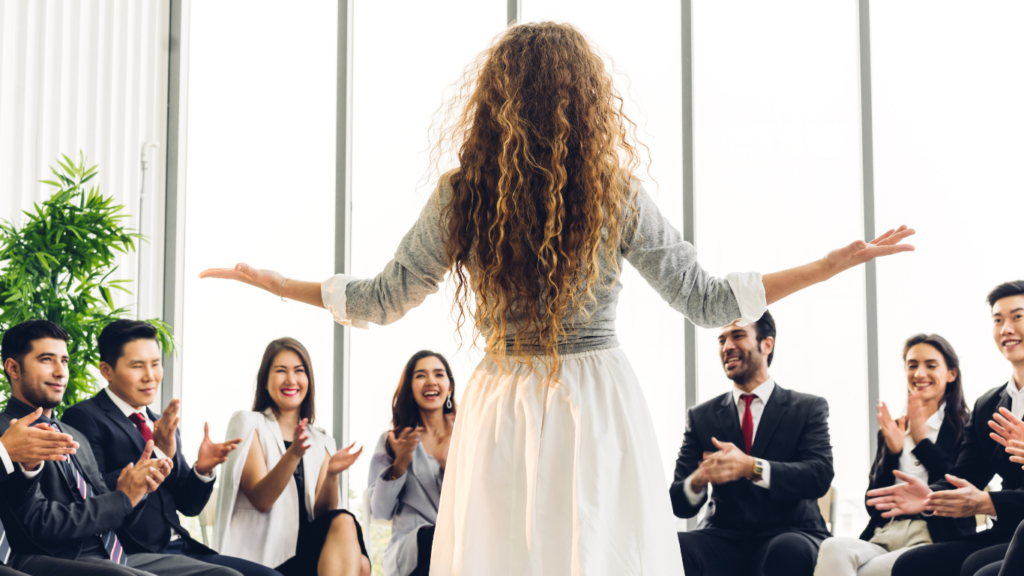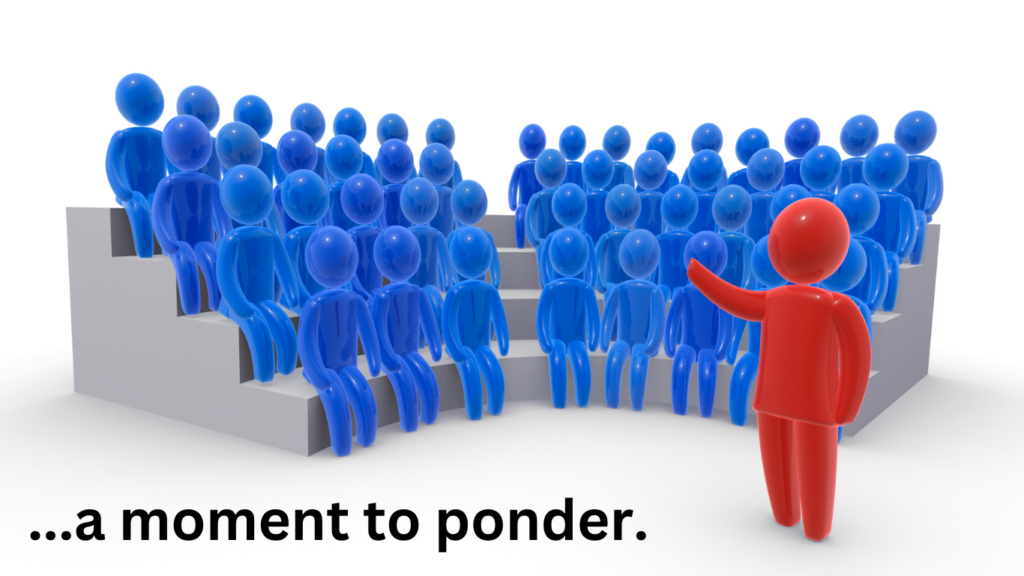
Founder’s Corner


During the course of our day, we are pulled in many different directions. Many thoughts and action items are clamoring for our attention. When we slow down and concentrate on one project at a time, it’s incredible how much more we absorb and how much quicker we accomplish the task.
Carry that same perspective into a presentation. Unseasoned speakers tend to rush through their talks, pausing only to take a breath…sometimes not even then! They worry about losing the audience’s attention or their own train of thought. They do a disservice to their audience, who is there to listen and learn. A listener requires time to comprehend and reflect on the information provided. Great speakers slow down and use the power of pause to capture attention, create anticipation, and nurture connections.
A leader can use the same technique (And So Can You) when presenting information to their team, a boardroom, or a client presentation. The pause is a powerful way to build up to a crescendo, let the audience ponder the problem, and then wow them with your solution. As we continue, you’ll see the various ways the power of pause can be used in other communications – for emphasis, anticipation, providing a chance for their words to have an impact, or to allow the audience to interject their own thoughts – whether out loud or in their head.

There are many ways to define a pause. We can Explore Pause together.
In all of these situations, the pause can be brief or lengthy.
From a leadership perspective, a pause is defined as a brief interruption of action or speech. Learning to use the pause will elevate your message and create confidence. One significant aspect of an effective leader is the use of pauses when listening, thinking, taking action, responding, and during overall speaking moments.
A simple pause is a powerful tool that you can learn to use.

I’m going out on a limb to do the very thing I often encourage leaders to avoid. That is to assume you’ve experienced the pause in any number of ways, such as when a subordinate takes a beat, a term often used in the world of acting before a character continues the flow of crossing the stage. We often experience dramatic moments when a character on television or in a film allows silence to fill the moment before responding to a fellow actor. You may have experienced it when a senior leader goes silent just prior to asking a follow-up question during your presentation.
Quite different from pausing to think of the ideal or appropriate word, the leader uses the power of pause to emphasize a point or let their words sink in. Allow me to show you how Pausing For Emphasis can be your super power!
Here are some ways to build in natural pauses:

In whatever way you may have experienced it, I’m willing to bet that you have also experienced just the opposite more often than you would like. Particularly in a business situation when the desire to move quickly is paramount for the speaker. In those moments, you’ve probably wished the speaker would pause to give you a chance to process what they have just shared. Yet, they speed through.
The power of pause invites your audience to experience what you already know. It gives them a stake in the action.
Here are the Benefits of Perfecting the Pause:

How do I know? I’ve spent two decades hearing from numerous clients worldwide to help their managers and leaders develop stronger platform skills during presentations. They want their people to be more effective when presenting to senior leadership and to their customer base. Sometimes it is a matter of simply slowing down during presentations. Mastering your pause is something we can work on together.
An example of this may be that moment when a presentation is in action and the speaker stops to check for understanding before moving forward. It could be that moment when the speaker says something profound and then allows for a moment of silence to let their point land for the listener. Perhaps a moment when a presenter completes a share of content. Then chooses to move silently from one place to another before speaking again on a different point.

Practically nothing can be more frustrating for the listener than to miss important information because the presenter is in such a rush to share and move on. The next time you spend hours creating a deck for a presentation, take time to actually practice delivering content related to each slide you show. Become benevolent towards your audience by planning pauses throughout your presentation as well as before and after answering questions. Click Here and I can show you how that is possible.
You will also want to pause to check for understanding. Doing so can drastically minimize missed information, time spent backtracking to clarify what was said, and time spent reiterating what you meant because your audience missed what you wanted them to think, how you want them to feel, or what actions you would like your audience to take.
I recall one particular keynote I delivered at an annual conference for a group of four-hundred professionals at the Waldorf-Astoria’s Starlight Roof in New York. The topic was the importance of engaging, inspiring and motivating others in their field. Over lunch one of the conference attendees sought me out and commented on how powerful it was for him when I often paused after sharing a key point. He noted the skill as key for him in establishing me as a truly professional speaker. I thanked him and smiled knowingly.


Most people speak around 150 words per minute in the course of a normal conversation. Those in places of authority such as a US president delivering a State of the Union address slow that down to 100 words per minute. That doesn’t mean that they spoke slower than everyone else, it means they built in pauses. Pauses do not take away from the meaning or target you as someone who doesn’t know what they are saying. The power of pause lies in delivery. Click Opportunity to Explore to learn about your delivery.

—Pema Chodron
Pausing is creative. When done with excellence, it’s an art form that grabs your audience’s attention and prompts them to bring their focus back to your message. It’s a sign of a confident speaker to be able to pause without discomfort. For the speaker or leader, the power of pause enhances their experience. More than just standing in front of a group of people and rattling off a speech, they are creating an emotional connection with the material and their audience. The speaker conveys thoughts and feelings in an informative and personal way. By slowing down and using the power of pause, this connection deepens.
I’m Byron Darden and I’ve been using the power of pause to communicate effectively with my clients and audience. It’s one of the tools you can add to your repertoire to make you a more effective leader. Click Here to book a call. Together we can perfect your power of pause or another roadblock to your success. Just click the button below to schedule your conversation with me to explore your leadership education needs.